Mirror image: Kimsooja’s self-reflective installations take over the French city of Poitiers
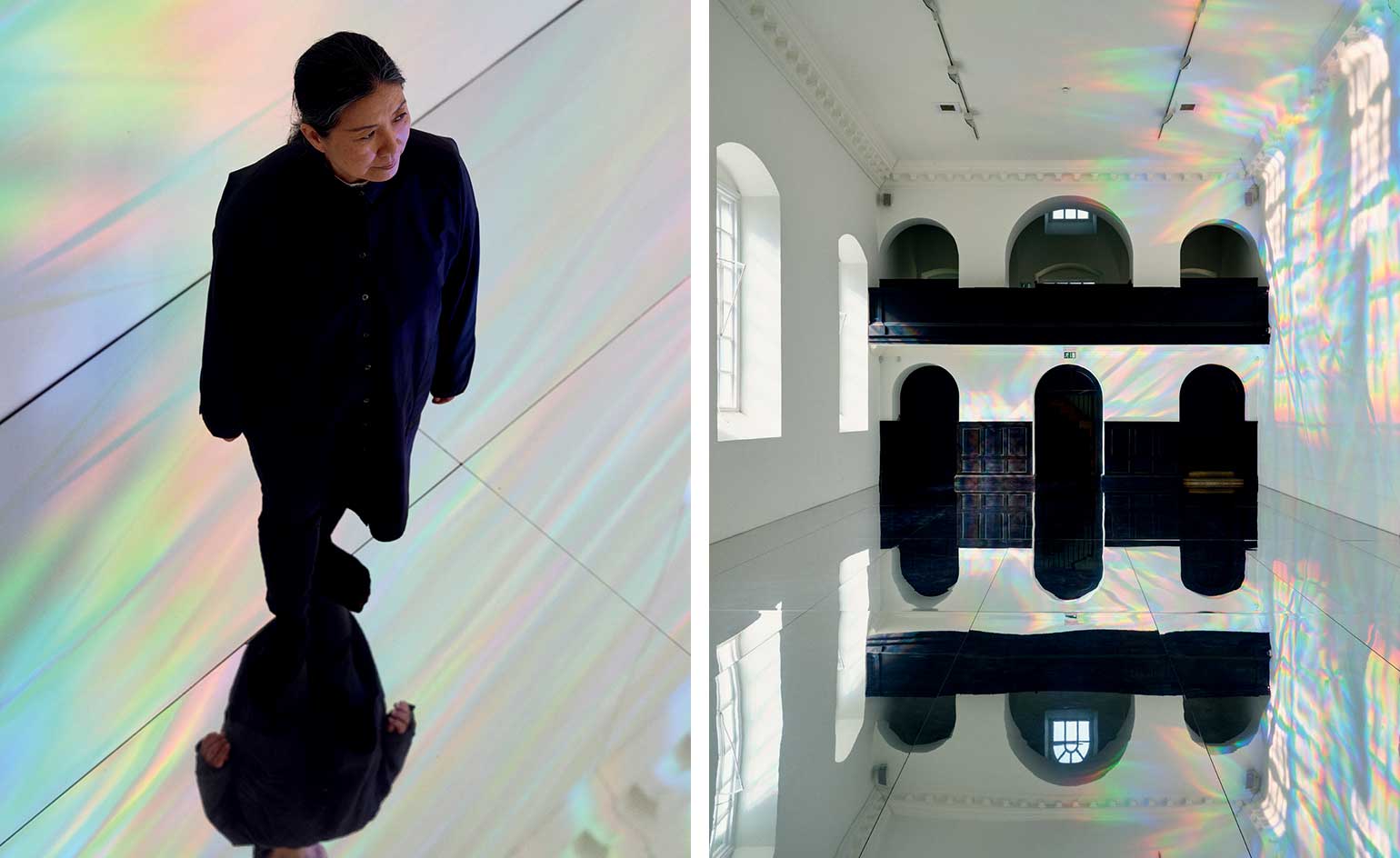
For more than 25 years, South Korean artist Kimsooja has focused her practice on a specific element in her country’s visual culture: the bottari, a colourful bundle of cloth used to wrap and transport items by hand. It is a traditional and timeless component of life in Korea, where bottari fabrics are often recycled from old silk bedcovers, a repurposing that inverts domestic and public spheres, conventional gender roles and power structures. It is in this context that Kimsooja began using this material in her work: ‘I’ve always started from my own reality and my own culture,’ she says. ‘It’s not that I like them, necessarily. I use them because it’s my reality.’
Kimsooja (who goes by a single-word name, in defiance of cultural conventions) has spent the better part of the past two decades peripatetically, based between New York, Paris and Seoul, and realizing projects around the world. Her meditative works explore the self, the other, and the narratives woven through life’s journeys. ‘The whole world I was viewing has been, in a way, wrapping and unwrapping the bottari,’ she reflects. Across sculpture, installation, performance and video, the bottari has served as a visual metaphor for the artist’s own decentred existence and a longer history of human transience, migration and now displacement in a globalized society.

Detail view of To Breathe, made using diffraction grating film and mirrors.
This year, the 62-year-old artist has translated the handheld bottari to an urban scale, wrapping the French city of Poitiers in a bundle of public art installations that activate its medieval architecture and foreground its rich history. Traversées is a sprawling contemporary art event in this old Roman town southwest of Paris, where Kimsooja inaugurates a new ten-year cultural and urban heritage initiative. More than a dozen works by the artist transform the city’s historic sites into sensorial experiences.
‘We wanted to put the city in motion, starting from its iconic sites of memory while looking to the future, which Kimsooja understood perfectly,’ explains the event’s co-artistic director Emmanuelle de Montgazon. ‘This constellation of works resonates together and allows visitors to chart their own course.’
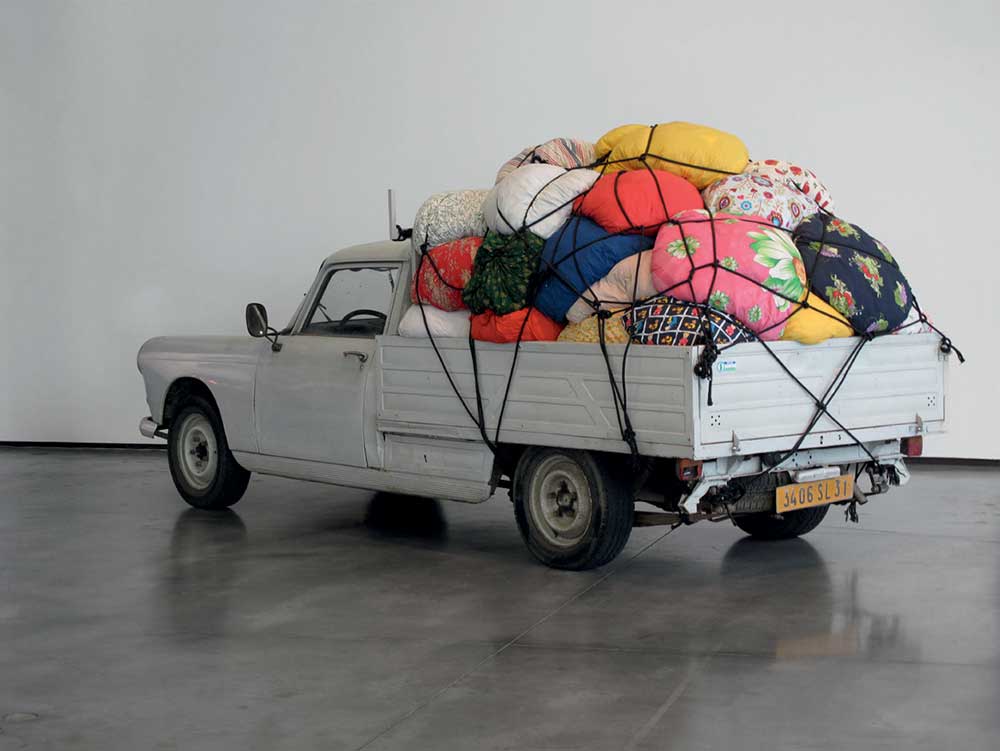
Bottari Truck – Migrateurs, 2007
An allegory of migration, this installation at Poitiers’ Chapelle Saint-Louis is accompanied by a film of the artist travelling atop the truck through Paris.
As the birthplace of Michel Foucault, Poitiers is an apt locale for an in-depth presentation of Kimsooja’s work. The influential 20th-century philosopher’s premise of heterotopia – a socio-cultural space of otherness theorized as a self-contained ‘world within a world’ that exists in parallel to our lived experience – seems a fitting description of Kimsooja’s bottari. The organizers of Traversées were drawn to the duality conveyed by Kimsooja’s works: ‘They exist only in relation to the places they take over, but they come with a very strong introspective dimension, says de Montgazon. ‘They belong as much to their own history as to the history of the places and people to which they are addressed.’
Kimsooja was originally drawn to bottari in 1992, during an artist residency in New York at PS1 Contemporary Art Center. She adopted it as a colourful, readymade, three-dimensional canvas and alternative platform for art-making that she quickly expanded in multiple directions. ‘I also started working in video, considering the video frame as a wrapping method – wrapping the world or wrapping nature – rather than image-making,’ she recalls. A representative series of her video performance works, collectively titled A Needle Woman (1999-2001), depicts the artist standing motionless in the midst of busy pedestrian thoroughfares around the world, with her back to the camera. In these simple yet compelling works, her body acts as a needle, the unceasing flow of passers-by serving to wrap her stationary form. For Kimsooja, video offers ‘an immaterial way of wrapping the reality of the world’.
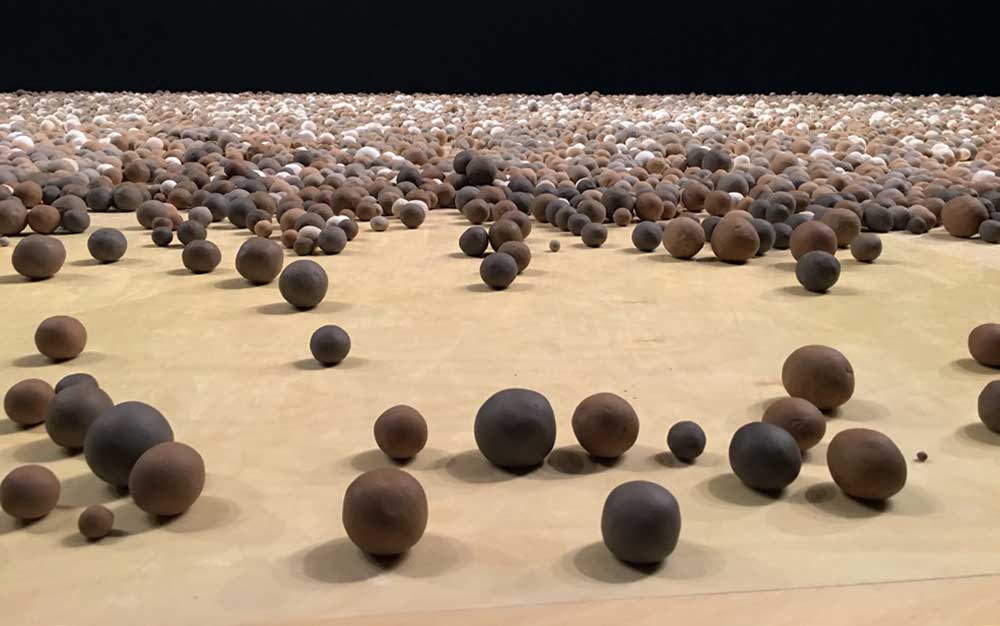
Archive of Mind, 2019
In the Palais des Ducs, the public is invited to form clay balls on a giant table, a nod to the banquets that were once held here.
In 2006, Kimsooja received a commission from the Museo Nacional de Reina Sofía in Madrid in which she introduced a different approach to wrapping reality: a site-specific installation at the city’s iron-and-glass Crystal Palace, built in 1887. Titled To Breathe: A Mirror Woman (2006), this large-scale architectural intervention covered the building’s glass exterior with a translucent film that diffracts white light into a spectrum of colours, swathing the interior space in an ethereal prismatic environment. A floor-covering of mirrors multiplied the refractions, completely enveloping the audience in her luminous bottari.
Similar bottaris of light and sound were subsequently unveiled at the 55th Venice Biennale in 2013 (where Kimsooja represented her country at the Korean Pavilion) and earlier this year at the Yorkshire Sculpture Park. In Yorkshire, Kimsooja transformed the art centre’s 18th-century chapel into a vertiginous space of reflection, both literally and metaphorically, softening the solid interior surfaces of its historic masonry, to convey a lightness that contrasted with its rigid exterior. In Poitiers, she unveils her first mirror installations to be exhibited in France, including one that reveals the stunning vaulted ceiling of the Maubergeon tower in the medieval Palais des Ducs d’Aquitaine.
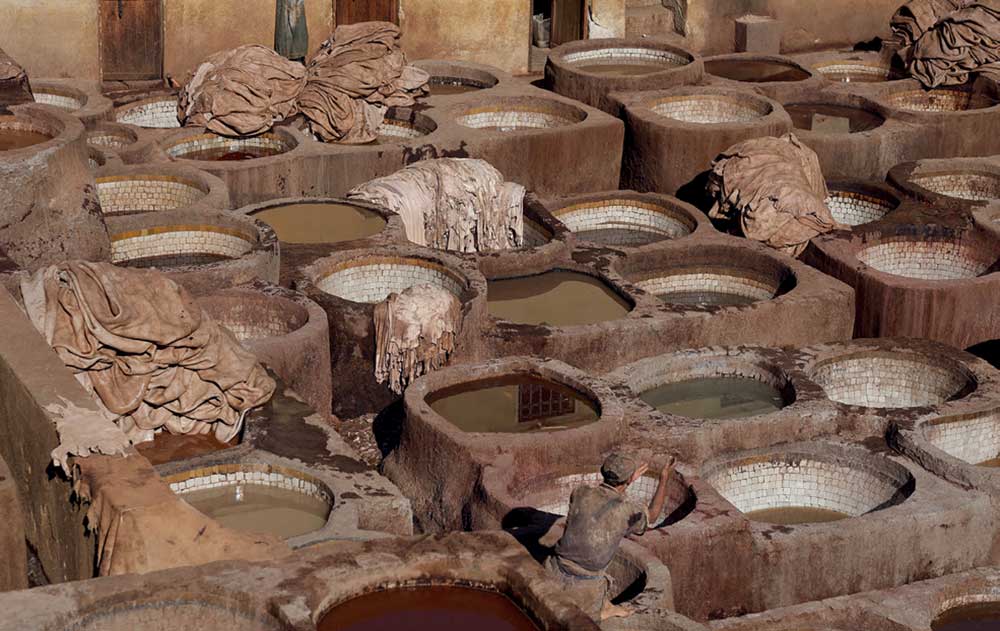
Thread Routes V1, 2019
Screened at the Palais, the latest chapter of this visual anthropology series focuses on Morocco’s crafts, including Fez’s tanneries.
Traversées also marks the debut of several new works by Kimsooja, including the latest chapter in her ongoing video series Thread Routes (2010-2019), which contemplates the intersection of craft, architecture and landscape through the lens of regional weaving practices. Whereas previous chapters brought the diverse textile traditions of Peru, Europe, India, China and indigenous peoples of North America into focus, Thread Routes Chapter VI (2019) explores the practices of Moroccan artisans working in leather-dyeing, tile mosaic-making, embroidery and weaving. As with earlier chapters, this work interrelates the natural landscape and aesthetics characteristic of the region with these traditions, creating a poetic portrait that weaves the routes and threads of local history and culture in dialogue with their surroundings.
For Traversées, Kimsooja approaches the city of Poitiers as a tapestry, its medieval streets and historic sites forming paths that intersect, converge and separate as visitors trace their own journeys while traversing its contours. Not only are her works installed throughout the city, but she has invited an array of other creators – among them composer Myriam Boucher, choreographer Min Tanaka, and artists Subodh Gupta, Tadashi Kawamata and Rirkrit Tiravanija – to contribute to the project, incorporating their own threads to the warp and weft of Kimsooja’s cultural fabric.
As originally featured in the November 2019 issue of Wallpaper* (W*248) – on newsstands now
INFORMATION
Receive our daily digest of inspiration, escapism and design stories from around the world direct to your inbox.
‘Traversées / Kimsooja’, until 19 Janaury 2020. traversees-poitiers.fr; kimsooja.com
-
 Carolyn Bessette Kennedy and Maria Callas inspire Max Mara Atelier’s ‘determined and dynamic’ winter collection
Carolyn Bessette Kennedy and Maria Callas inspire Max Mara Atelier’s ‘determined and dynamic’ winter collectionThe house’s couture line is dedicated every season to a single garment – the coat. Here, designer Laura Lusuardi talks Wallpaper* through the collection
-
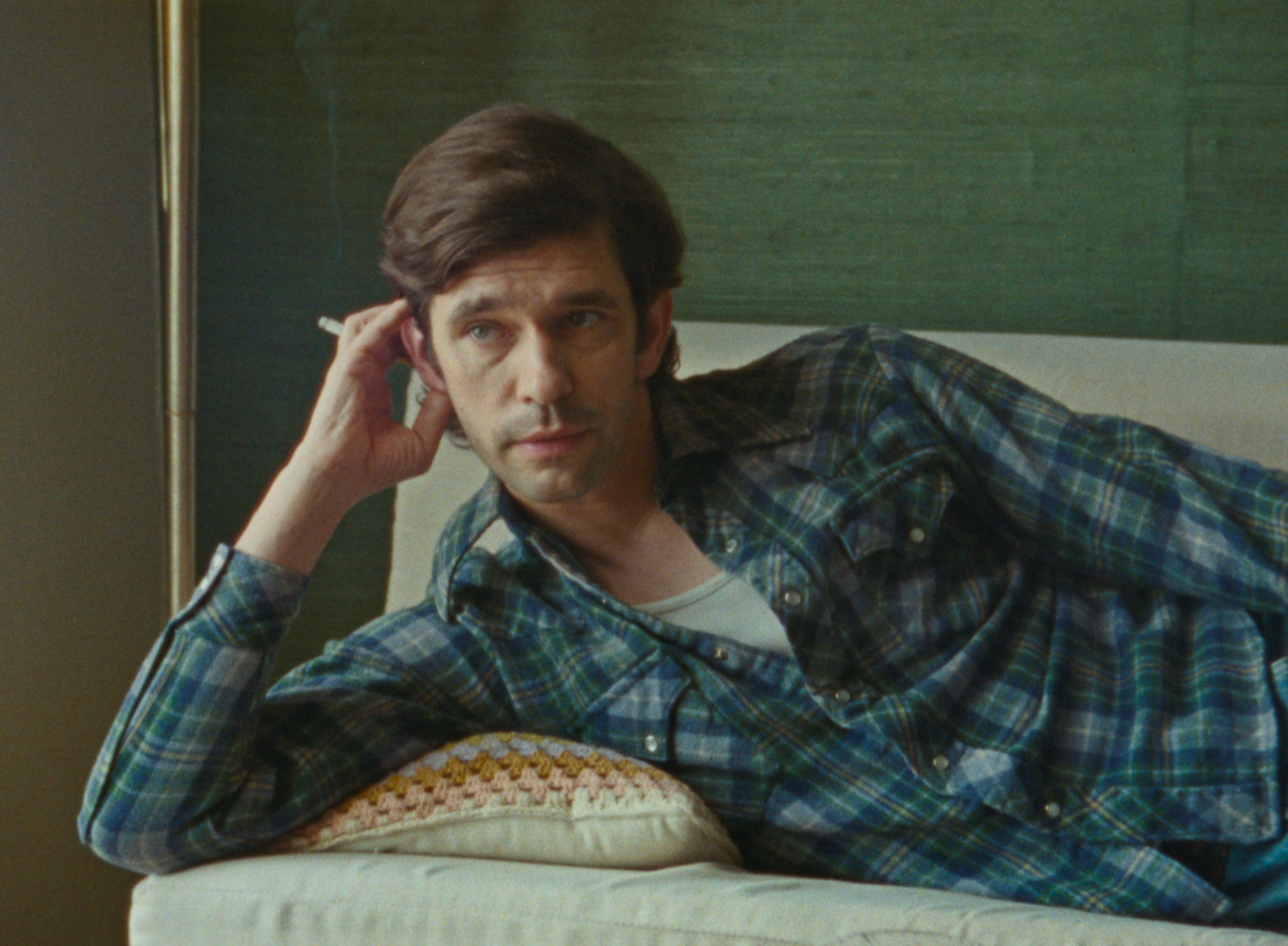 Can the film 'Peter Hujar's Day' capture the essence of the elusive artist?
Can the film 'Peter Hujar's Day' capture the essence of the elusive artist?Filmmaker Ira Sachs and actor Ben Whishaw bring Peter Hujar back to the front of the cultural consciousness
-
 New tech dedicated to home health, personal wellness and mapping your metrics
New tech dedicated to home health, personal wellness and mapping your metricsWe round up the latest offerings in the smart health scene, from trackers for every conceivable metric from sugar to sleep, through to therapeutic furniture and ultra intelligent toothbrushes
-
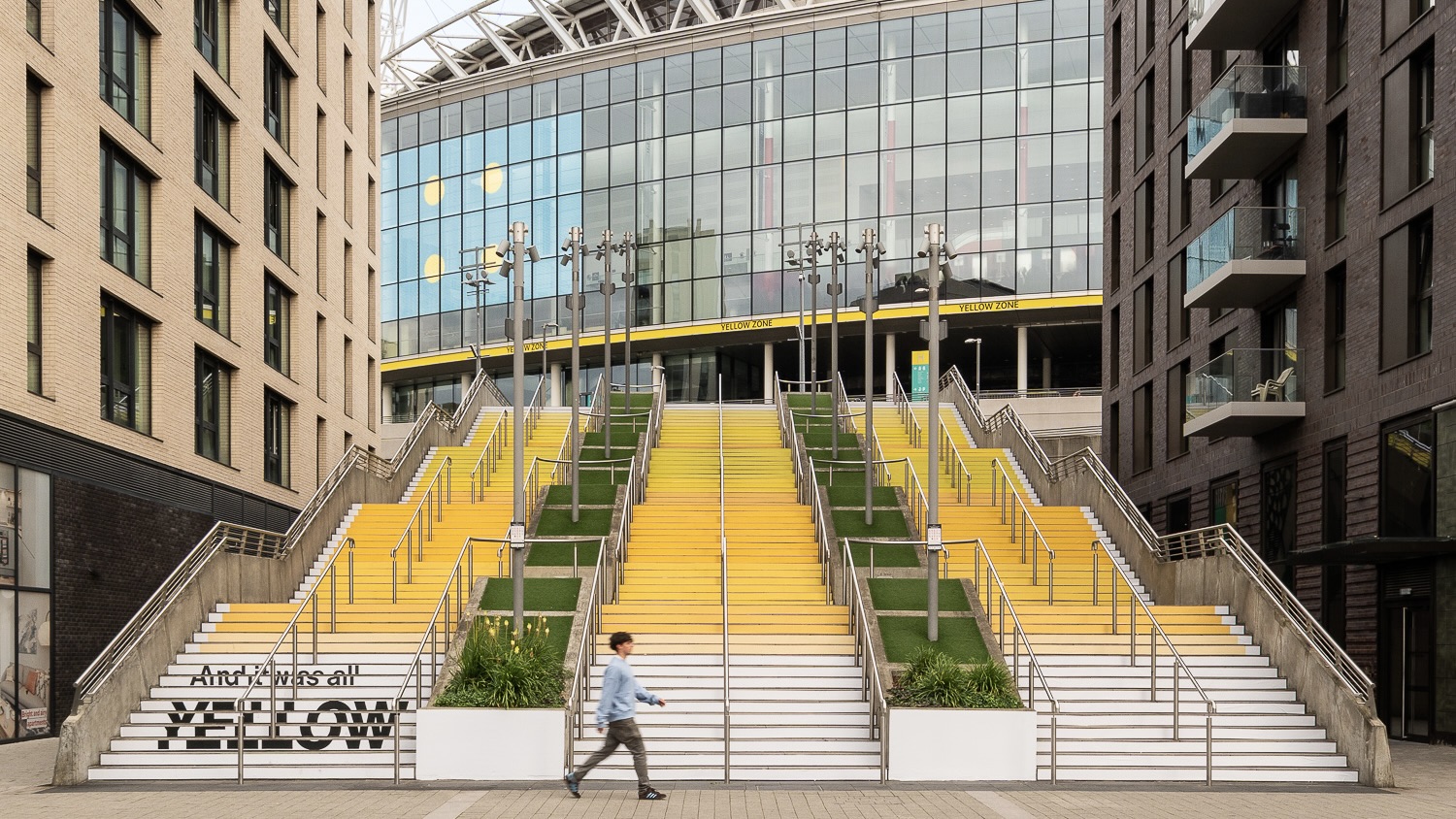 Pantone’s new public art installation is a tribute to Coldplay’s ‘Yellow’, 25 years after its release
Pantone’s new public art installation is a tribute to Coldplay’s ‘Yellow’, 25 years after its releaseThe colour company has created a – you guessed it – yellow colour swatch on some steps in Wembley Park, London, where the band will play ten shows this month
-
 Out of office: the Wallpaper* editors’ picks of the week
Out of office: the Wallpaper* editors’ picks of the weekSummer holidays are here, with Wallpaper* editors jetting off to some exceptional destinations, including highly recommended Mérida in Mexico. Then it’s back to work, or, for one editor, back to school…
-
 San Francisco’s controversial monument, the Vaillancourt Fountain, could be facing demolition
San Francisco’s controversial monument, the Vaillancourt Fountain, could be facing demolitionThe brutalist fountain is conspicuously absent from renders showing a redeveloped Embarcadero Plaza and people are unhappy about it, including the structure’s 95-year-old designer
-
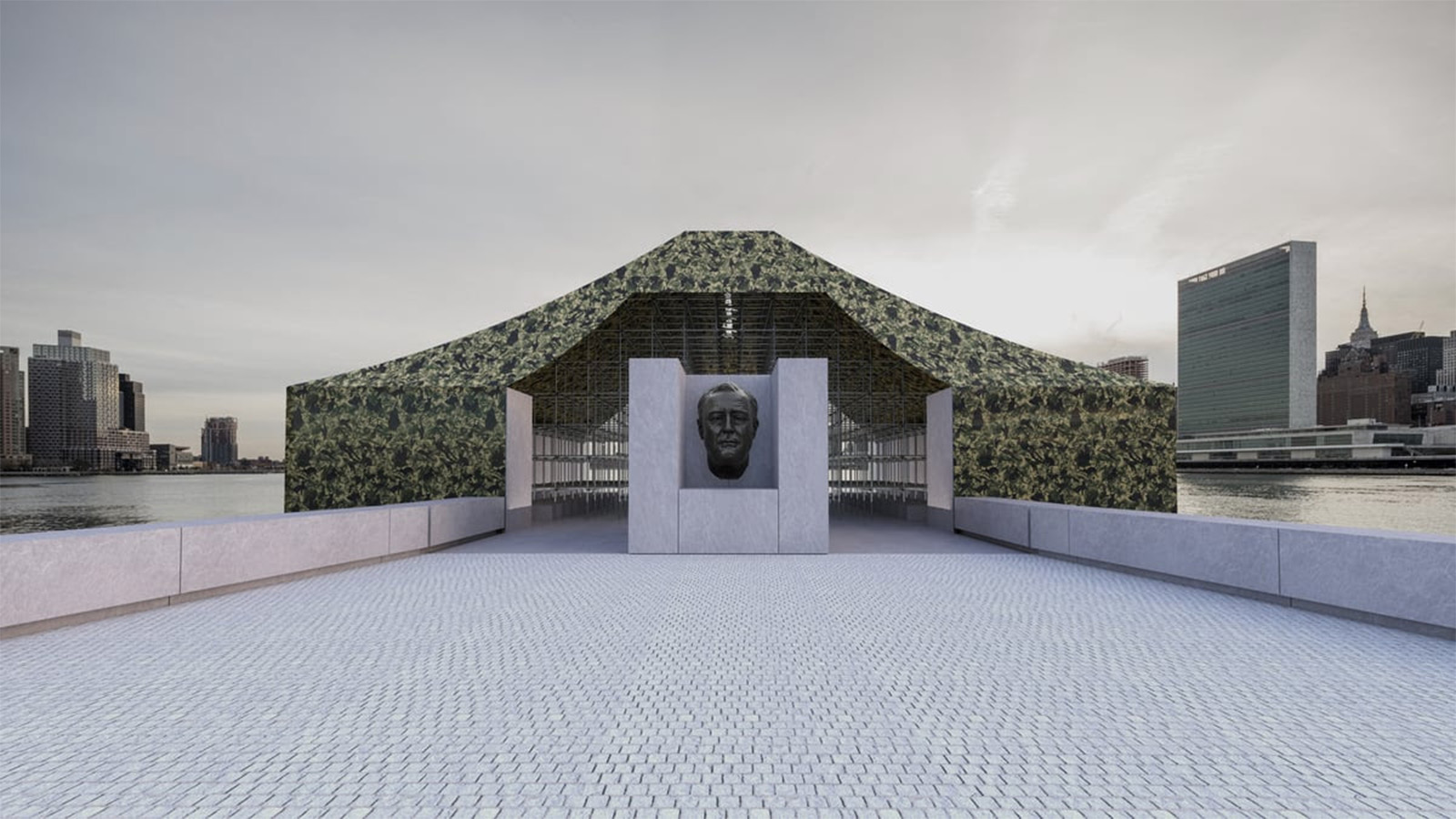 Ai Weiwei’s new public installation is coming soon to Four Freedoms State Park
Ai Weiwei’s new public installation is coming soon to Four Freedoms State Park‘Camouflage’ by Ai Weiwei will launch the inaugural Art X Freedom project in September 2025, a new programme to investigate social justice and freedom
-
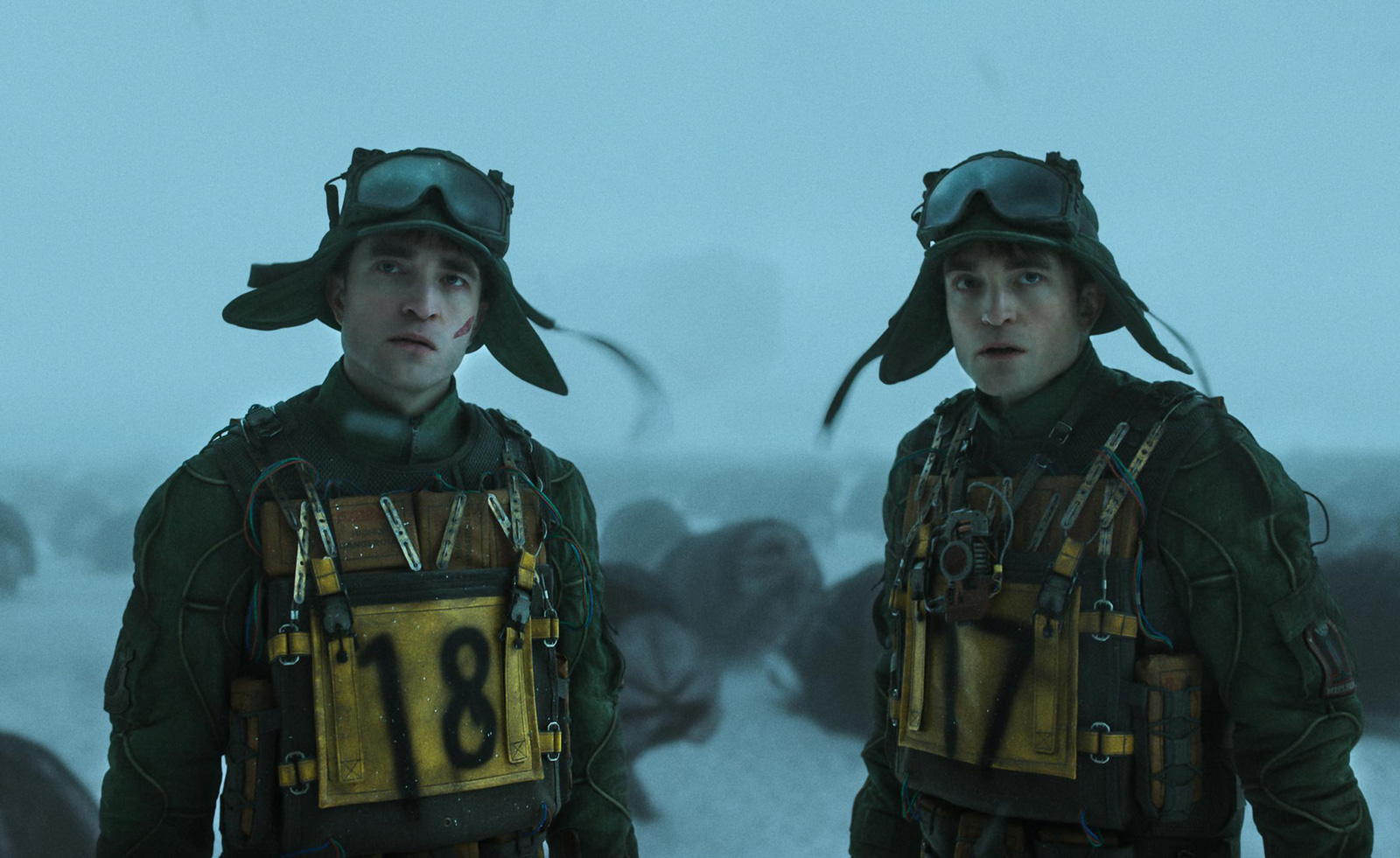 Bong on Bong: the Mickey 17 and Parasite director looks back on his career
Bong on Bong: the Mickey 17 and Parasite director looks back on his careerAs sci-fi romp Mickey 17 prepares to hit the big screen, Oscar-winning director Bong Joon Ho reflects on his career so far
-
 Photographing free time in South Korea: rare days off captured in new book
Photographing free time in South Korea: rare days off captured in new bookFree time is hard-earned in South Korea. In Seunggu Kim's new photography book 'Better Days,' he captures the beauty of the country at play
-
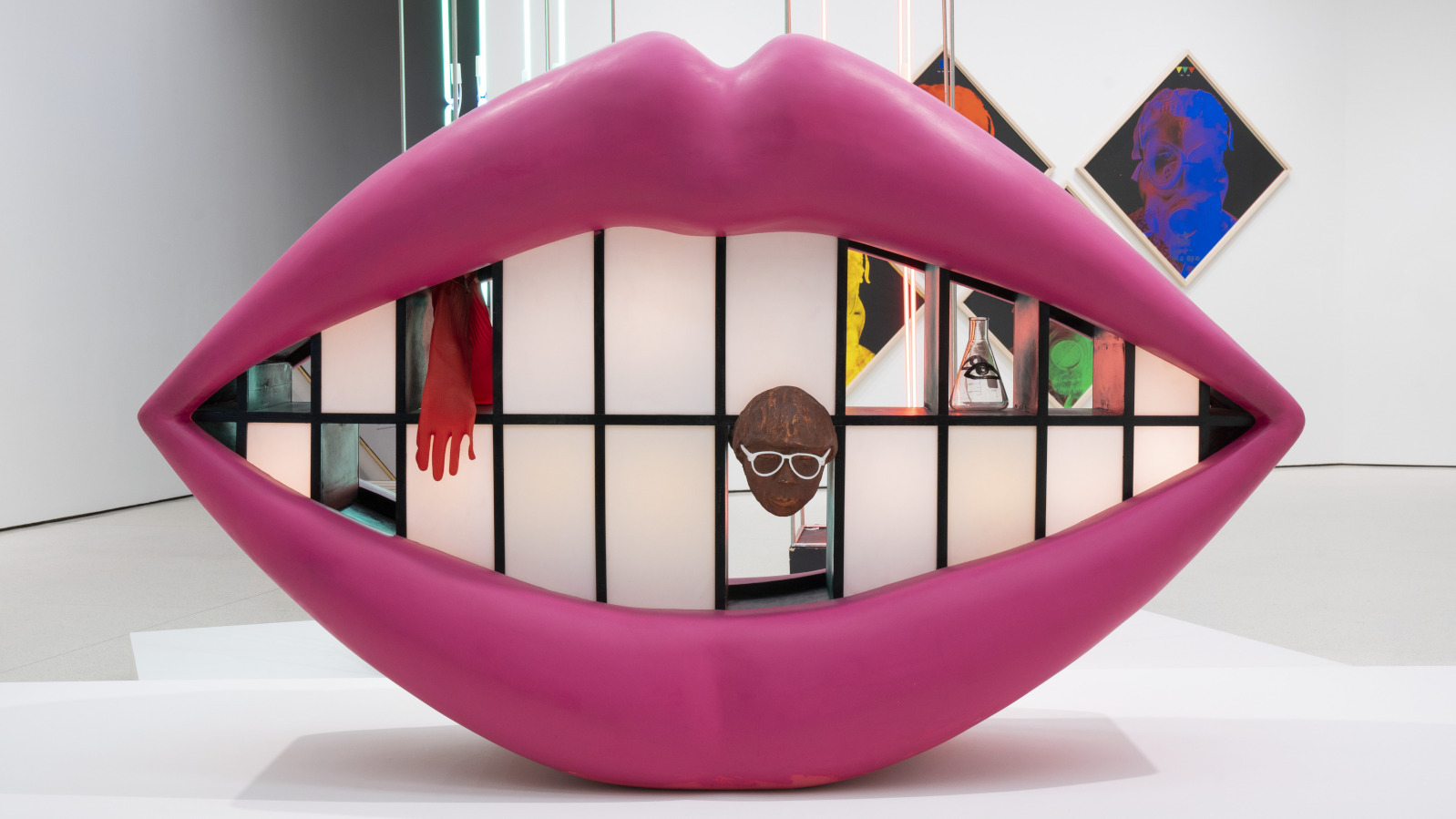 An avant-garde Korean art movement resurfaces in LA
An avant-garde Korean art movement resurfaces in LALA's Hammer Museum gets its teeth into avant-garde Korean art with ‘Only the Young: Experimental Art in Korea, 1960s–1970s’
-
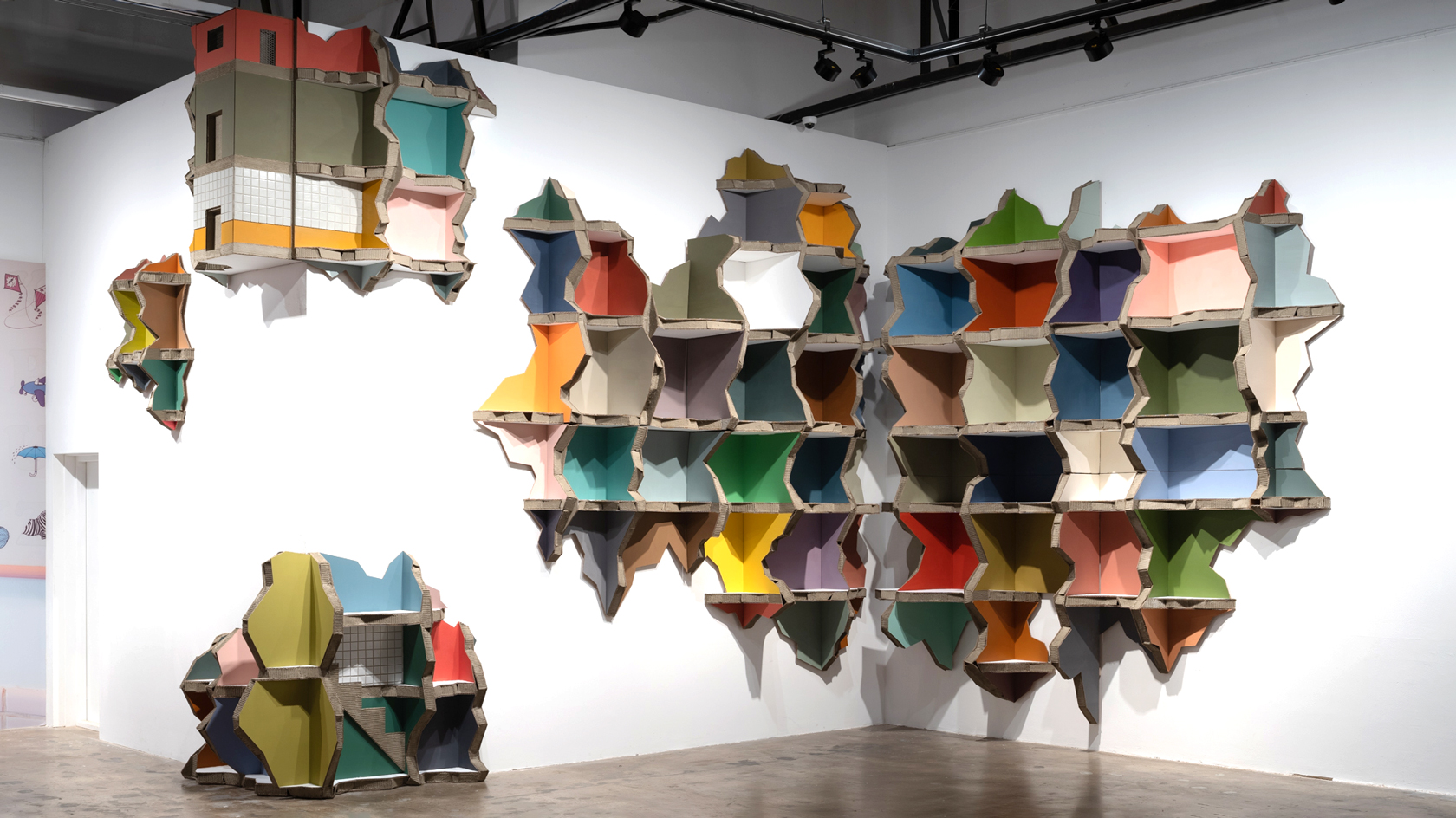 14th Gwangju Biennale review: a stage for new voices and ancient ideas
14th Gwangju Biennale review: a stage for new voices and ancient ideasSouth Korea’s 14th Gwangju Biennale (until 9 July 2023) takes water as its central theme, in which climate, Daoism, historical trauma, local craft and voices of the marginalised float to the surface